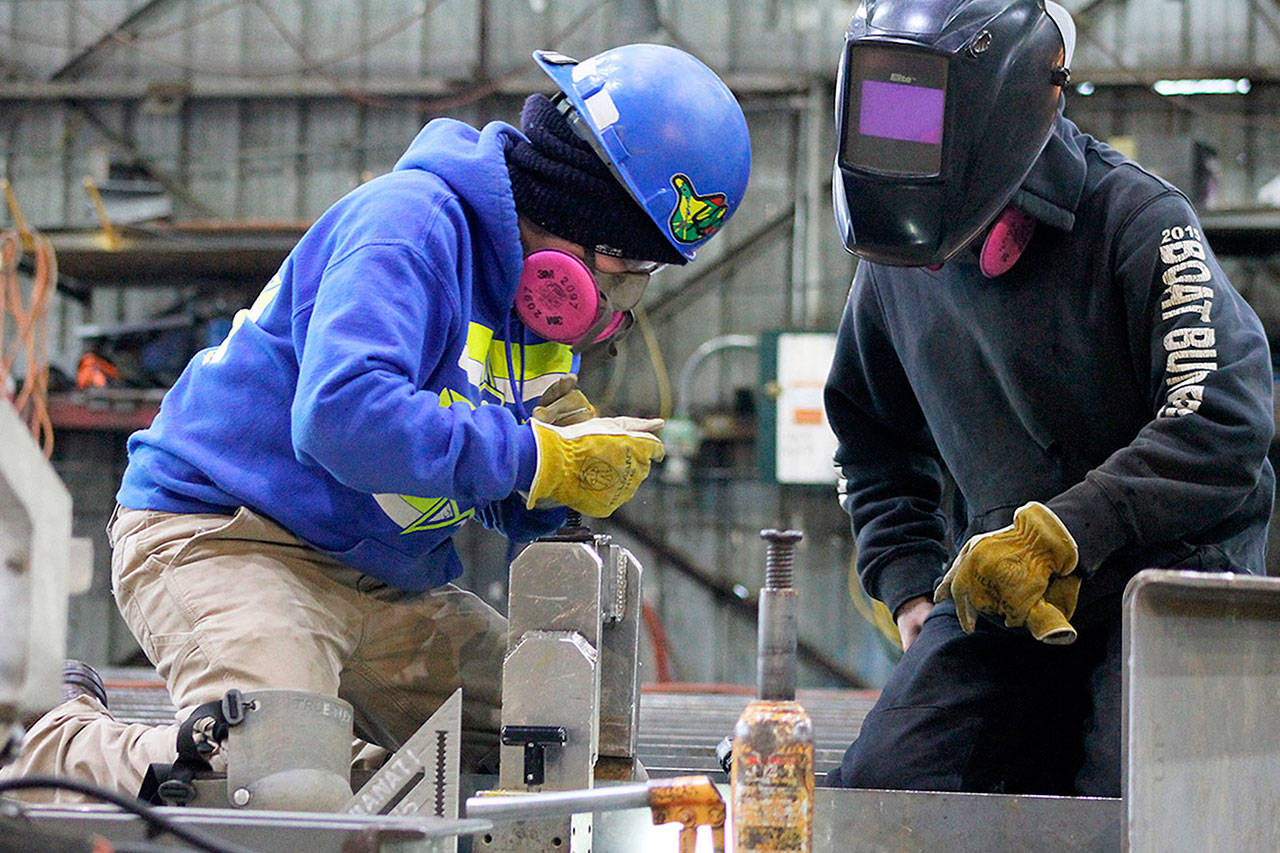A video by Washington Roundtable says 70 percent of Washington state graduates need to earn a post-secondary credential or degree by the time they are 26 to meet the expected demand for workers in the state.
By The Herald Editorial Board
We’ve shared the number before from Washington Roundtable that between 2016 and 2021, Washington state can expect some 740,000 job openings. That’s good news for those crossing the stage to accept their high school diplomas this month.
It’s better news if those high school graduates are considering some level of post-secondary education, whether that’s college, other trade or technical training or apprenticeships.
Because fewer and fewer jobs will be available to those with only a high school diploma.
Those 740,000 jobs break down this way: About 150,000 are entry-level jobs, paying $20,000 to $30,000 a year. Career jobs, paying $60,000 to $100,000 and usually requiring at least a four-year degree, will go to another 260,000. The largest block of jobs — 330,000 paying salaries of $30,000 to $45,000 to start — will go to those with career or technical credentials — which can be earned in two years or less — positions that the Roundtable refers to as career pathway jobs.
The problem, says Steve Mullin, president of the business policy group, is that not enough high school graduates are earning a degree or post-secondary credential to fill those job openings, a huge concern for the state’s private employers and for the health of the state’s economy.
A recent report by the state Auditor’s Office found that good jobs are already wanting for qualified applicants because of a lack of necessary training, more than 3,000 unfilled in skilled positions in carpentry, sheet-metal work, plumbing, electrical and other trades.
Of those who are about 26 years of age and graduated in 2006, only about 31 percent have earned some level of post-secondary accreditation. That’s not enough with the required training and education to meet that demand. The numbers already are improving. Of those graduating high school in 2015, about 40 percent are expected to have career training or a college degree by the time they are 26. But that’s still not enough.
In order to meet the demand for qualified employees, 70 percent of Washington’s youths need those credentials by age 26.
Washington Roundtable, since the release of its initial report in 2016, has pushed for policy changes and investments by the Legislature, in the business community, public schools, trade schools, colleges and universities to meet that goal. Its initial focus was on K-12 public education, seeking improvements and additional funding for early learning opportunities, gains in third-grade reading proficiency, improved achievement at low-performing school, support for a 24-credit high school diploma and competency-based graduation requirements.
Part of the formula for getting to 70 percent is a statewide high school graduation rate of 95 percent. Thanks in part of recent investments by state lawmakers in K-12 education, high schools aren’t too far off that mark at 82 percent, and some — such as Everett School District — are nearly there. For its purposes, Washington Roundtable accepts five-year graduation rates. Everett’s most recent grad rates were nearly 91 percent for four years and just shy of 95 percent for five years.
The Roundtable’s most recent report focuses on the need to increase enrollment in post-secondary programs. About 77 percent of the high school class of 2015 will enroll in college or career programs. That number also must increase to 95 percent. Increasing that percentage, the report recommends, requires better guidance of K-12 students in career opportunities and pathways, more convenient access to post-secondary programs and more financial assistance to high school graduates.
Among its recommendations, the state Auditor’s Office report recommends improving career guidance to students as early as the seventh and eighth grades.
An example of one effort at the high school level is the Everett School District’s Career Pathways proposal, which seeks to establish study concentrations at each of the district’s high schools for medical and health careers, aerospace and advanced manufacturing, information technology and related fields and energy, transportation and sustainability.
Getting the rest of the way to 70 percent for the high school class of 2030 — next year’s first-graders — will also require expanding guided-pathway programs at community and technical colleges, more support for students transferring from two-year to four-year college programs and re-engaging those who have dropped out of high school and post-secondary educations, the report says.
And those efforts will need a greater focus on working with minority communities, including American Indian, Latino and African-American students, but also males in general, who are lagging behind the achievement rates of females.
Emphasis on career and technical education has sometimes been criticized as an effort to draw students away from colleges and universities. That’s not the intent here, Mullin said, because doing so wouldn’t increase the larger pool of those with degrees or credentials. But the Roundtable does want to see all students introduced and helped along career pathways that are the closest fit with their interests and talents.
There’s plenty here for all — lawmakers, state officials, employers, school districts, community and technical colleges, parents and students — to pick up a tool and start work.
The jobs will be there. Our kids have to be ready for them.
Talk to us
> Give us your news tips.
> Send us a letter to the editor.
> More Herald contact information.

























